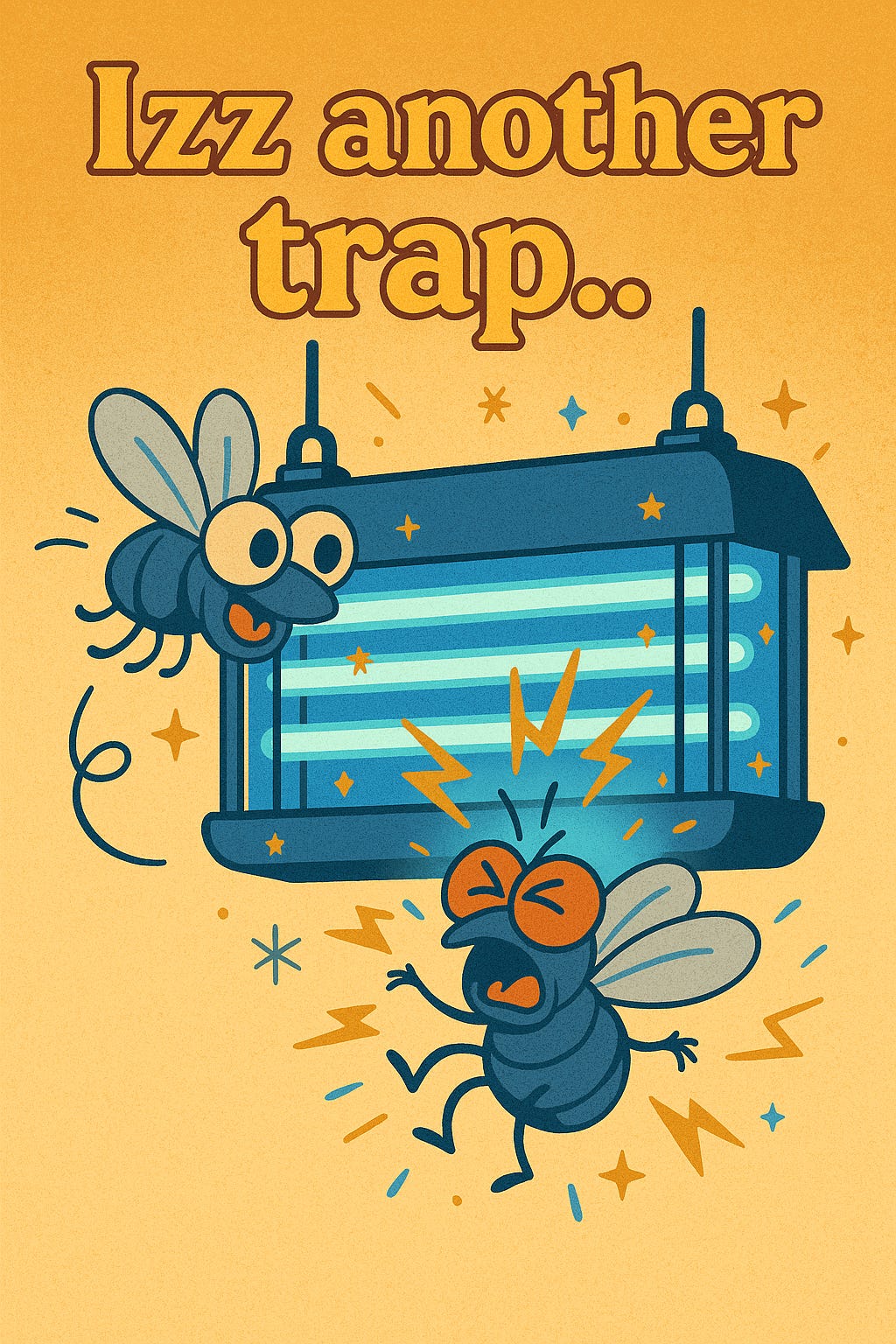Why Are Flies Drawn to the Blue 'Electrofryer'?
The Wonder
You've seen them in restaurants and shops - those glowing blue boxes that periodically emit a satisfying "ZAP!" as another fly meets its doom. Moths dive-bombing into flames make sense in a tragic sort of way, but why are flies so irresistibly drawn to these electric blue death traps? What is it about that specific glow that overrides millions of years of survival instincts?
The Surface Answer
The obvious assumption is that bugs are simply attracted to light - any light. They're "dumb" and fly toward bright things. But wait - flies don't swarm your reading lamp or cluster around your phone screen. They're not particularly interested in your yellow porch light either. There's something special about that blue glow, something that speaks to flies in a language evolved long before humans invented electricity.
The Real Reason
Those blue lights emit UV-A radiation at wavelengths between 315-400 nanometers - a range that's largely invisible to humans but spectacular to flies. Fly eyes contain specialized photoreceptors that detect ultraviolet light far better than ours. To a fly, that bug zapper isn't just bright - it's broadcasting in a wavelength that screams "IMPORTANT!"
Here's where evolution plays its cruel trick. Flies evolved to navigate using natural UV light from the sun and to find food and mates using UV patterns. Many flowers have UV "landing strips" invisible to us but clear as neon signs to insects. Decomposing organic matter - fly food - often reflects UV light. Even water surfaces create UV patterns that flies use for navigation.
The bug zapper hijacks these ancient navigation systems. To a fly, that blue glow might look like the mother of all food sources, or a massive navigational beacon, or even a potential mating site. Their compound eyes, with thousands of individual lenses, are particularly sensitive to flickering light - and the AC current in bug zappers creates a flicker that's irresistible to their visual system.
The Evolution
For millions of years, following UV light was a winning strategy for flies. The sun was the only major UV source, and using it for navigation worked perfectly. Flowers evolved UV patterns to attract pollinators. Flies evolved to see these patterns to find food. It was a stable system for eons.
Then humans invented artificial UV light. The first bug zappers appeared in the early 1900s, but they really took off in the 1960s when we figured out that UV-A was the sweet spot - attractive to insects but safe for human exposure. We'd accidentally created the perfect fly trap by mimicking the exact wavelengths their eyes were tuned to detect.
The Benefits
The system works because it exploits a fundamental mismatch between evolutionary time and technological time. Flies can't evolve away from UV attraction in the mere decades since bug zappers became common - their visual system is hard-wired by millions of years of evolution. It's like how humans crave sugar and fat because they were rare and valuable for our ancestors, even though they're now abundant and problematic.
The blue color we see is actually a byproduct. The zappers could emit pure UV invisible to us, but manufacturers add visible blue light so we know the device is working. The flies don't care about the blue - they're drawn to the UV we can't see.
The Alternatives
Why not other colors? Red light actually repels many insects. Yellow lights attract fewer bugs than white. Green has mixed results. But UV consistently works across multiple insect species because it taps into fundamental biological systems.
Interestingly, not all flies are equally susceptible. Studies show bug zappers kill surprisingly few mosquitoes (only 0.13% of the catch in some studies) but lots of beneficial insects. Mosquitoes hunt using CO2 and body heat, not UV light. So that satisfying zap might be killing more pollinators than pests.
The Satisfaction
So those hypnotic blue death traps work because they're speaking an ancient language - broadcasting a signal that fly brains interpret as supremely important. It's not stupidity that draws flies to their doom, but instincts perfected over millions of years suddenly betrayed by human invention. Every zap represents a creature whose ancestors successfully navigated by UV light for countless generations, only to meet their end because we learned to fake the signals they trust most. The bug zapper is evolution's blind spot made visible - or rather, invisible to us but fatally visible to them. Nature programmed flies to fly toward UV light, and we found a way to make that programming deadly.


